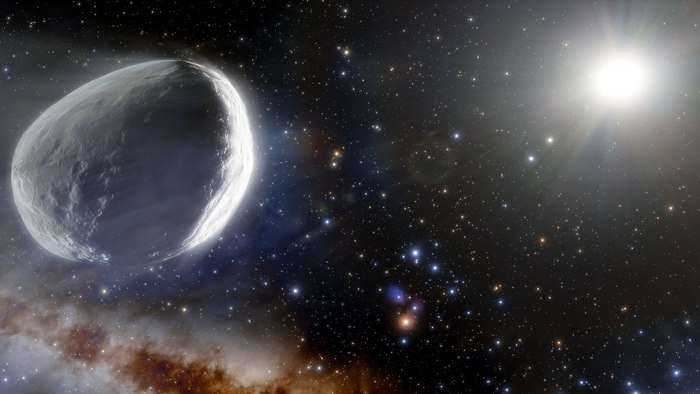A giant comet, most likely the largest ever seen, is on its way to the Solar System.
It is similar in size to a dwarf planet and is called Bernardinelli-Bernstein, from the name of the discoverers (or technically C / 2014 UN271).
It does not represent a danger because in its moment of maximum approach to the Sun, in 2031, it will still be very far from the Earth, beyond the orbit of Saturn.
Details of this precious cosmic wreck are being published in The Astrophysical Journal Letters by the international research group led by the same discoverers of the comet.
With its 155 kilometers in diameter, the comet was initially mistaken for a dwarf planet when it was accidentally spotted in 2014, during the great Des (Dark Energy Survey) campaign, which lasted years and dedicated to the study of dark energy, i.e. mysterious energy that occupies 75% of the universe. In that same campaign, designed to study very distant cosmic objects, over 400 new 'intruders' have been identified that populate the most extreme periphery of the Solar System, where the Oort cloud is located.
When it was discovered the comet was at 29 astronomical units (AU, i.e. the Earth-Sun distance) and from the analysis of the trajectory the object comes from at least 40 thousand AU and its closest approach to the Sun is expected for 2031 at 10.97 AU, more than the distance between the Sun and Saturn. The comet may not be visible to the naked eye, but according to researchers its passage will be a unique opportunity to study the past of the Solar System.
The Bernardinelli-Bernstein could in fact be 'immaculate', that is, it had never come so close to the Sun, which with its radiations would have altered its surface composition.
It is therefore a sort of cosmic fossil able to tell many details of the first phases of the formation of the Solar System.It is believed that during the passage it could generate a very weak halo of dust (coma) that can be studied through telescopes and spectrometers and open thus a new window on the origins of the Solar System.










